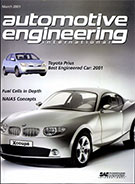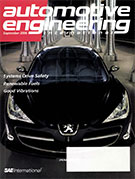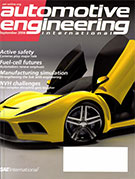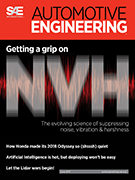Magazine
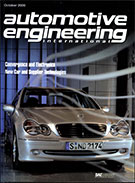
Automotive Engineering International 2000-10-01
2000-10-01
Speed is king Motorsports offers automakers a fast way to develop new technologies and quick-thinking engineers. This article explores how DaimlerChrysler, Ford, and General Motors approach motorsports as an engineering tool. Electronics: changing the shape of the automobile The decisions made by the automotive industry the next few years will forever change the shape of the automobile. The electronic technologies to improve fuel economy, increase passenger safety, lower emissions, and improve reliability are evolving quickly, but because of their cost the exact timeframe for their implementation is undecided. Chevrolet Corvette The Z06 is the big news for 2001, the new model having a high-output 5.7-L LS6 V8 developed by GM Powertrain. Innovation meets the mid-size segment The 2001 Chrysler Sebring and Dodge Stratus offer more power, enhanced NVH characteristics, and improved safety. Third-generation M3 The all-new high-performance M3 coupe debuts in North America.
